 By the most conservative estimates, the world’s car fleet exceeds 1.5 billion vehicles. At the same time, the total number of electric vehicles is only 0.7 percent of the indicated Numbers. The paradox is that electric cars appeared earlier than vehicles with internal combustion engines (ICE).
By the most conservative estimates, the world’s car fleet exceeds 1.5 billion vehicles. At the same time, the total number of electric vehicles is only 0.7 percent of the indicated Numbers. The paradox is that electric cars appeared earlier than vehicles with internal combustion engines (ICE).
However, the lack of critically important technology in the 1840s did not allow the potential of such vehicles to be unleashed. As a result, the market moved entirely to ICE-powered cars.
Times are changing, and right now electric cars are successfully expanding into the vastness of the transportation industry. The world leaders are leading the way and taking necessary steps towards the adoption of electric vehicles.
Welcome to E-Vehicleinfo- Infographics! Here I wrote an article on “How Norway Become the Fastest EV Adopter in the World? EV Adoption Strategy ” and how Norway went on to become a global leader in the electric passenger car revolution as well as a leader in electric vehicle sales.
Table of Contents
Norway- An Introduction to Economy
Norway is home to incredible landscapes and one of the richest and most developed countries in the world that stand guard on advanced technological advancements and environmental initiatives.
This small state of about 5 million people sets the trend in many areas of human activity as its GDP per capita is higher than the United States, Canada, and Japan.
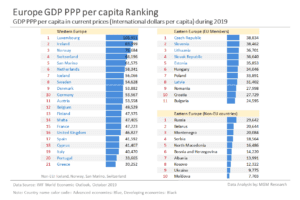
Not surprisingly, Norway is one of the engines of the electric revolution in the transport sector, even petroleum which is the foundation of the economy does not prevent the achievement of such outstanding results.
Norway is among the top 10 countries that are the largest exporters of black gold in the world, but all this does not prevent local residents from being sensitive to nature and actively contributing to the development of a carbon-neutral economy.
The electric vehicle boom in Norway began in the mid-70s and gradually Norway took first place in the Highest EV sales Market.
Norway’s Three Phases Strategy to adopt Electric Vehicles
Norway to Move Ahead in Three-Phase of Electric Vehicle in across country.
The First Phase Mid-70s- Referred as the Concept Phase
Norwegians began to look closely at electric cars in the mid-70s, a period is known as the “concept phase”, which aimed at the emergence of prototypes in the local market and the development of advanced electric motors during that time.
There was a serious interest in alternative fuel cars that originated in Norway in the 70s, with the cost of registering a vehicle equal to the price of the car.
Buyers of electric cars were exempted from the requirement to pay the mentioned charges and were given additional concessions like free parking and tax deduction for corporate vehicles, which only increased in the public interest.
The Second Phase-1999- Referred as the Birth year of the Norwegian Electric Vehicle
Remember that electric cars were far from ideal at the time and often caused more trouble than good.
The next phase began in 1999, and this year is considered the birth year of the Norwegian electric vehicle market.
Local manufacturers of equipment and large players such as Ford Motor Company began with the emergence of the Electric Drive Transportation Association and the establishment of the state organization Transnova, pursuant to this VAT exemption of 25% in 2009.
And, Its main task was to actively develop a network of charging stations, which led to a real boom in the electric car market in Norway.
Transnova Program in Norway- “Transnova intends to financially benefit good environmental projects that will accelerate the increased use of alternative fuels such as second-generation biofuels, electricity, and hydrogen. Transnova will advance better solutions to environmental problems within the transportation sector.”
Third Phase-2013- Third and Final Phase of Expansion of Transportation using Alternative Fuel Cells
The third and final phase of the expansion of transportation using alternative fuel cells began in Norway in 2013, is directly related to the technological revolution that Tesla has seen as a steady decline in the cost of electric cars, as well as a significant increase in performance.
And this led to the fact that local manufacturers of such cars died out and were replaced by large companies.
When we talk about Elon Musk’s electric cars from 2012 -14 we realized that the concept of cheapness is not entirely appropriate. The first Tesla Model S costs are over 1o Million and don’t really fit with the idea of an Affordable Electric car.
Despite the cost, the mentioned electric cars are as close as possible to modern Internal combustion engine ICE-powered cars in terms of their technical level and equipment.
This factor, combined with Norway’s high-paying capacity and tax breaks, played a decisive role in the new transport boom in 2012.
Market Share of Norway- Electric Vehicles
The share price was 3% in 2012 – 2020 it is around 54.3% and including plug-in hybrid, it is around 75%.
Electric vehicles accounted for about 3% percent of the total sales. In 2020 this figure was 54.3 percent add plug-in hybrid, we get an even more impressive result which will be over 75%.
The Norwegian plug-in car segment market share has been the world’s highest for several years, achieving 29.1% in 2016, 39.2% in 2017, 49.1% in 2018 55.9% in 2019, and 74.7% in 2020. (Wikipedia)
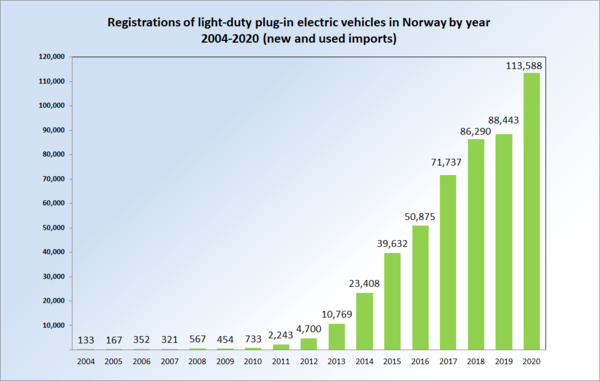
Thus Norway became the first country in the world where alternative fuels held a dominant position in the market.
Electric Mobility – Norway Race Ahead in plug-in Electric Vehicles
Statista Report ( Mentieod below) Norway becomes the country with the highest share of plug-in electric vehicles in new passenger car sales in 2018.
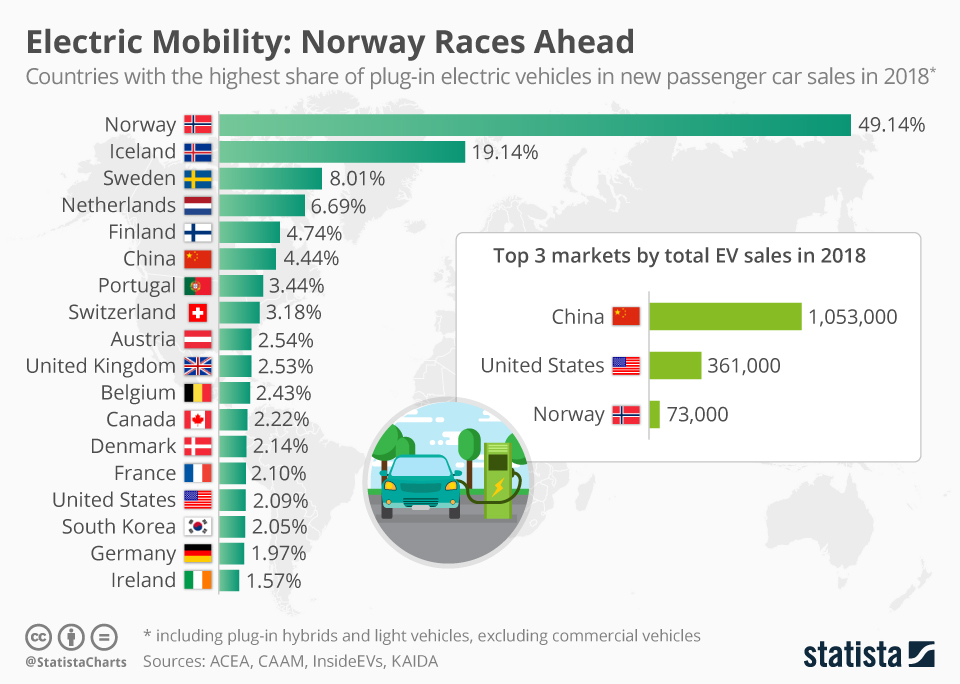
Timeline Of Norwegian Electric Vehicles Incentives
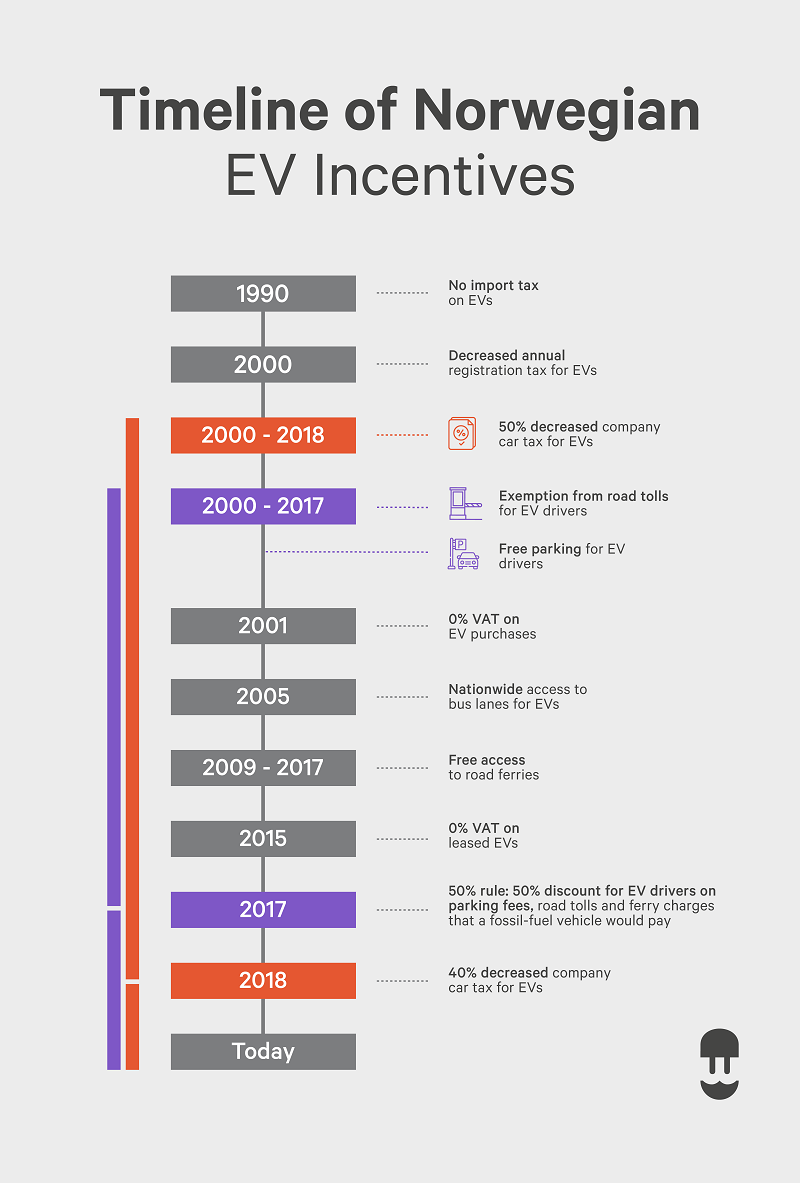
Which Carmakers and Models are most in Demand in the Northern Kingdom?
Surely many of us believe that the American giant represented by Tesla has taken over the market, but in fact, the sports crossover Audi e-Tron last year become the most popular car among electric cars. The Tesla Model 3 came in second place, followed by the Volkswagen id3 and the Nissan Leaf.
Another popular car in Norway is the hybrid version of the Volkswagen Golf which is in great demand. In October 2020, Volkswagen’s ID. 3 beat Nissan’s LEAF to become the best-selling electric car model in Norway. The country was Europe’s second-largest electric vehicle market in 2019.
According to preliminary estimates here, the share of all-electric cars in the Norwegian car market will be around 85% by the end of 2021.
and in April 2021, plugins electric vehicles took an 80.1% market share in Norway. up from 69.6% in April 2020. Overall auto volumes had returned to seasonal norms, with 13,166 vehicles registered.
Electric Car Market Share Norway, 2015-2020
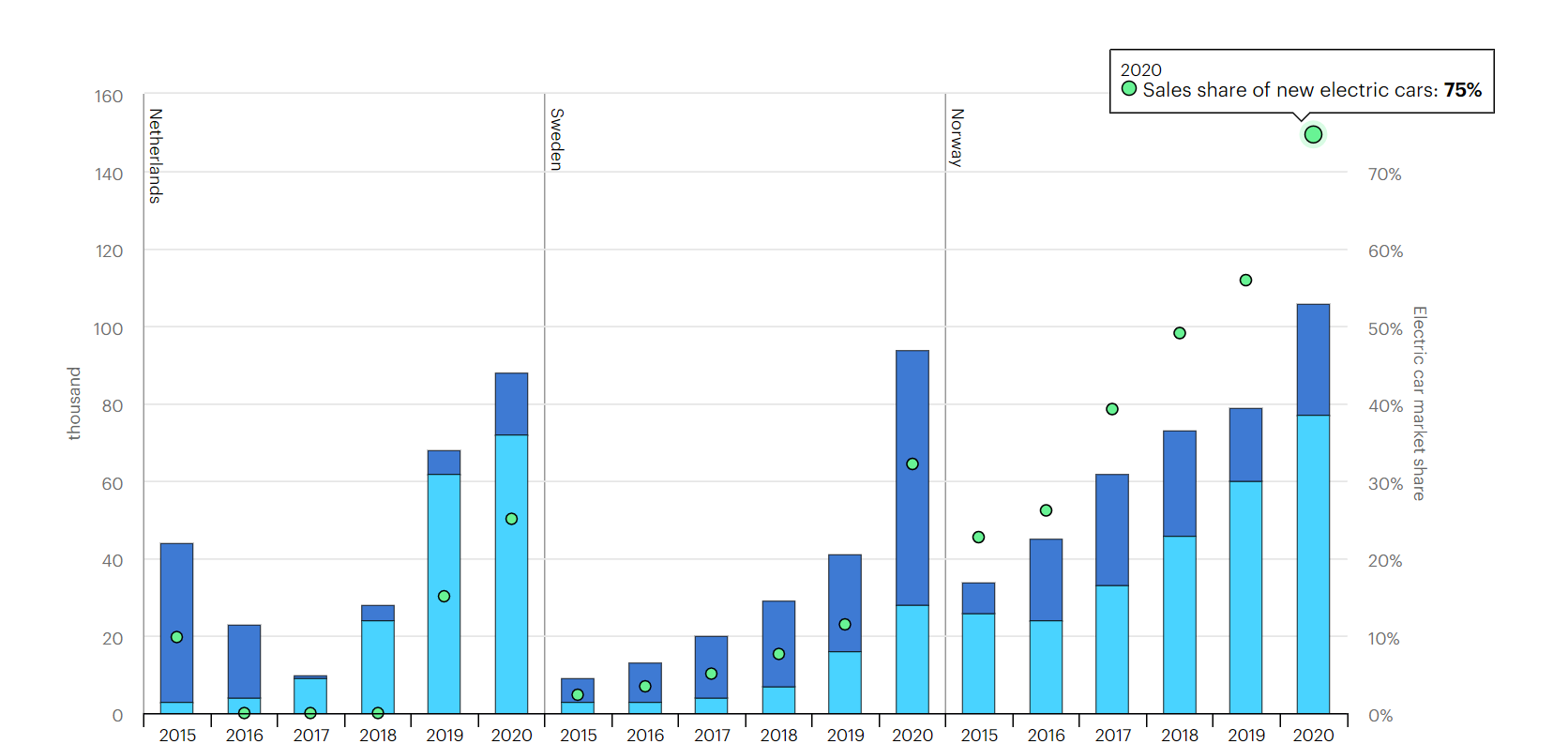
This is an unprecedented indicator that demonstrates the commitment of the local population and importantly authorities to a rapid transition to transportation with alternative energy sources by 2025.
The country is eager to completely abandon the purchase of Internal combustion engine ICE cars and replace them with electric cars, plug-in hybrids, and battery vehicles.
The Secret to the Success of Norway in Electric Vehicles
The long-term subsidies of innovative forms of transport, which began to appear back in the 70s, were saved and significantly increased by Norwegian-led tax and administrative concessions, leading to the purchase of an internal combustion engine car in Norway. And owning it became a lot more expensive. Compared to buying and maintaining an electric car.
While the country wants to give up most of the benefits over time, the point of no return for internal combustion engines has passed.
The citizens of this state prefer electric cars and enjoy using them-
“The Strategy of adopting electric vehicles in Norway is simple, the high purchasing power of the population, commitment to a sustainable means of transport, and a relatively small car market. In addition, Norwegians truly strive to achieve sustainable development with nature and contribute to the bright future of planet Earth.”
That is why there is no doubt that the northern kingdom will not only be able to completely abandon the purchase of new cars with internal combustion engines by 2025 but also achieve carbon-neutral status in 2030.
Norway as a whole is shifting the economy to new rail | Go Green Go Electric






